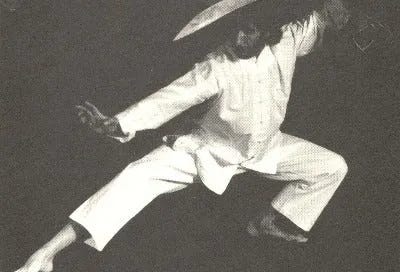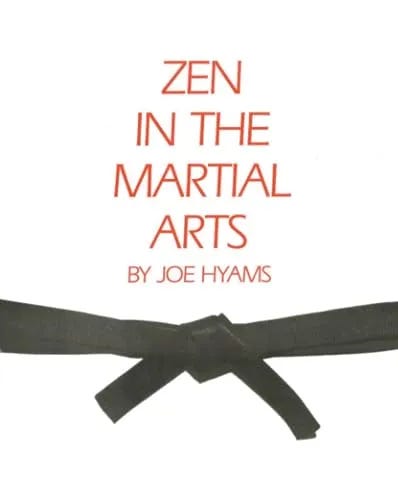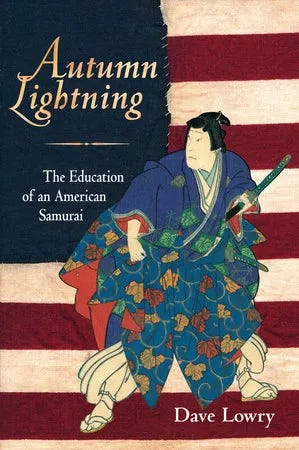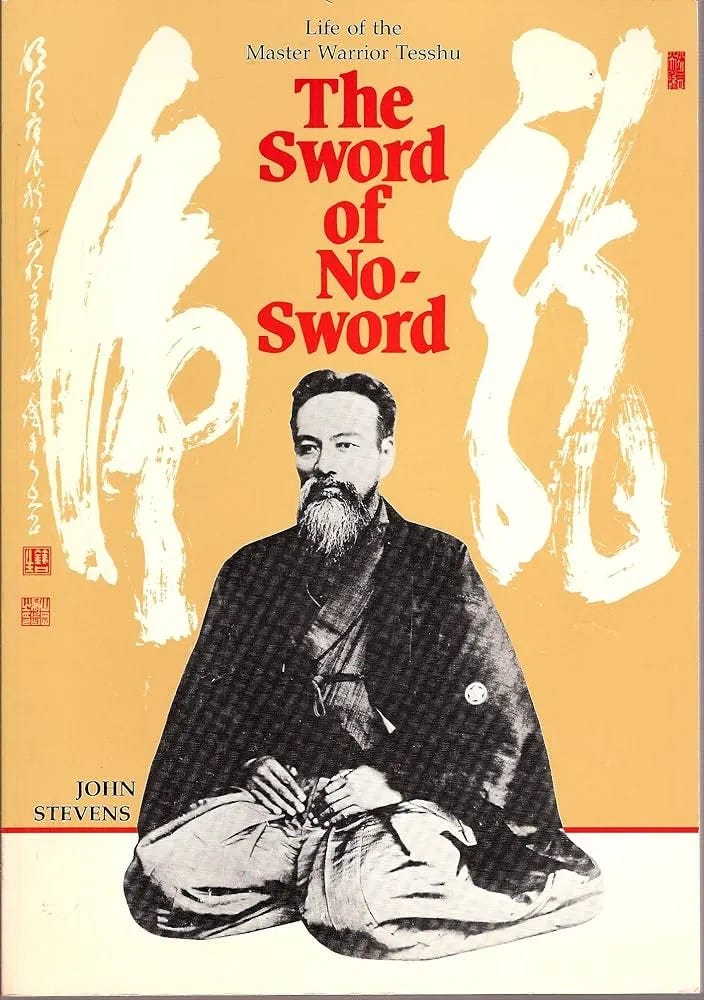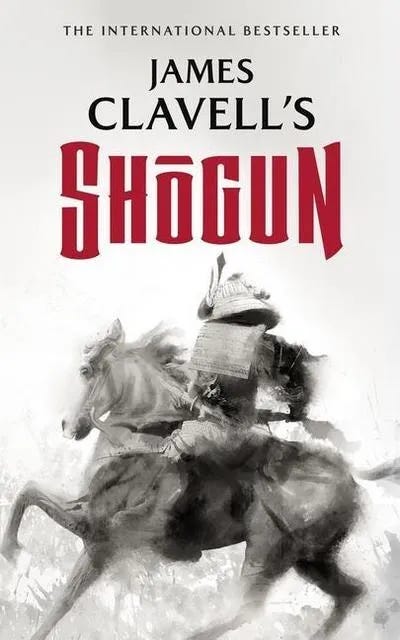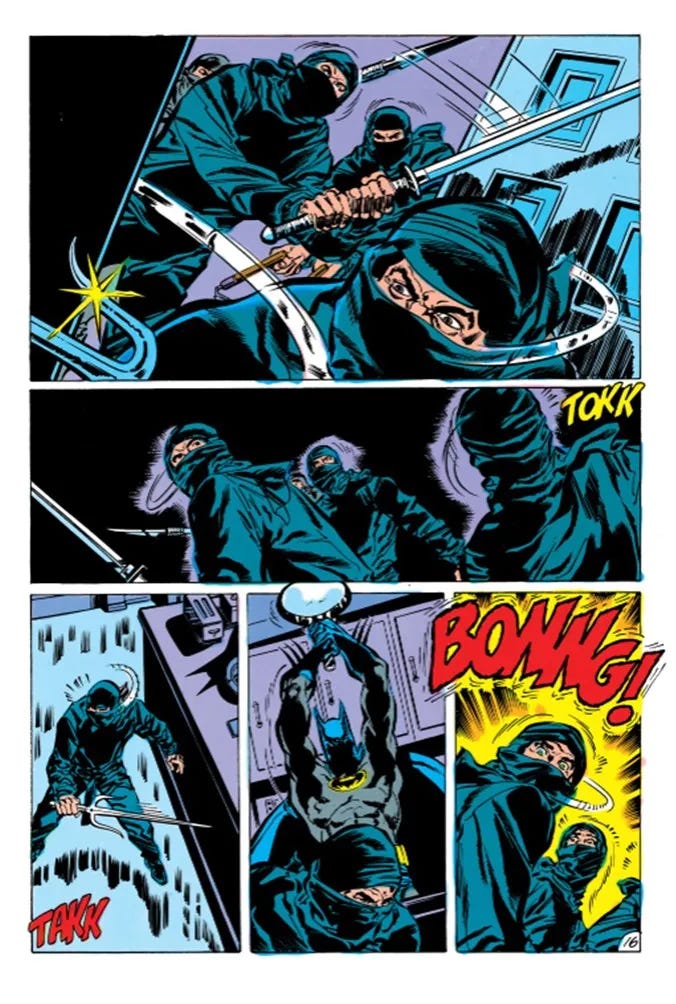Editorial Note:
“One will weave the canvas; another will fell a tree by the light of his ax. Yet another will forge nails, and there will be others who observe the stars to learn how to navigate. And yet all will be as one. Building a boat isn’t about weaving canvas, forging nails, or reading the sky. It’s about giving a shared taste for the sea, by the light of which you will see nothing contradictory but rather a community of love” (Antoine de Saint-Exupéry). Or, as it was recorded on Usenet, “If you want to build a ship, don’t drum up people together to collect wood and don’t assign them tasks and work, but rather teach them to long for the endless immensity of the sea.”
Jeff’s already listed under my recommended publications, and some of you have found him (I am watching you), but some of you have not yet. Check out his prolific writing. Of special concern to my audience will likely be his books: Prevail (foreword by Ethiopianist par excellence the late great Richard Pankhurst) and The Gifts of Africa. Alongside his shortform Substack pieces: Interview with Eskinder Nega and a positive review of the Amhara Popular Front and more.
I commissioned Jeff to write a book review of Karate-Do: My Way of Life by Gichin Funakoshi, and as all great artists do, he sought the muse and pursued it. We share a taste for the Red Sea, and the earth thereof. This you knew. But we also share a taste for the martial arts and sciences (the opening hour of POAAS 118 would have informed you of this in advance). This martial spirit is important for the restoration of aksum. And I delight in highlighting an unexpected and pleasantly surprising side to someone you think you already know.
Written by: Jeff Pearce, historian and novelist
Must Have Books for the Martial Artist: Yep, a completely arbitrary, subjective list
There is seldom a long period of time when I don’t have a passing thought about my late karate sensei, Miguel Palavecino, whom I could fairly call my friend. You’ll find martial artists who brag about the athletic prowess of their teachers, but Miguel was also a reader, which I always appreciated. He lent me books, suggested books I should find for my own pleasure and to increase my knowledge base, and I’ve always been a little disappointed that more martial artists don’t read. If they did, they might realize that books can answer a few questions that time in the dojo simply can’t.
Miguel, for instance, could tell you the derivation and history of certain forms in karate and tai-chi, and I always remember his quip about such things being useful to know “because it’s good to meet your grandfather.” This seemingly throwaway remark was deeper than you think. Miguel was reminding his students that in martial arts, there is a whole universe of culture that’s accessible to everyone. Whatever background you come from, whatever your ethnicity, you can walk into a school and learn.
I no longer train. I lost a library of books in the UK, which is a whole other story, and when I tried to rebuild my collection, I didn’t go out and rebuy books because my time in karate belonged to “another life.” Now I find myself missing that life and those precious volumes that gave me so much joy and insight. And while yes, training vigorously in any martial art is often a young man or woman’s game (unless you’re a walking weapon like Hirokazu Kanazawa or aikido’s Morihei Ueshiba), you can at least keep appreciating that culture you adopted.
So, when H.E. Negash reached out to me to write about one of the literary gems of martial arts, I replied basically that we could go on beyond just one book. Reading tastes are subjective, but here, from my point of view, are martial arts classics every kohai, senpai, and sensei (or sifu) should read. These are memoirs, books on the history of the arts, fun items and not the manuals you might pick up to help your training, like say, Dynamic Aikido or the Tao of Tai Chi Chuan or the Best Karate series. This is the stuff you read on your own time, away from the mats.
It occurs to me, sadly, that no great book on martial arts like these has broken through to become a reliable gem for our own age. I can’t even think of a “star” from the martial arts who stands as big as the legends of a bygone time. Let’s put it this way. If you watched what I’d argue is the last decent film Steven Seagal ever made before he went off the rails, Out for Justice, or David Mamet’s lesser known, under-appreciated, Redbelt, most folks barely noticed a small part actor named Dan Inosanto while those of us who trained sat in the theaters and thought, Holy crap, it’s Dan Freakin’ Inosanto! In other words, he was “ours,” not Hollywood’s.
Today, I suppose there’s no need for the ‘masters' to write when you can push your personal story (or your brand) in a podcast or on a website. Less work. Well, fine, but that doesn’t mean you as the student shouldn’t read.
I apologize that my choices heavily favor the Japanese arts, but I do think you can still appreciate these books even if you’re studying a tradition from a different culture.
Karate-Do: My Way of Life by Gichin Funakoshi
This is a charming, delightful book, and it’s usually the first one any curious beginner picks up after thumbing through a kata manual. Funakoshi was the guy who modernized karate around the turn of the 20th century, and one of the sources of pride for my dojo was that we could trace our teachers four steps back to him. Some readers find this assortment of memoir, oral history, and personal philosophy superficial and simple, but they’re deceived by Funakoshi’s straightforward style. He leaves it up to you to do the mental heavy lifting.
And there’s wonderful stuff in this book. Even the foreword offers a funny anecdote that reminds us that Funakoshi had one foot in the new century while keeping one in an era of tradition, so much so that he couldn’t bring himself to use the word for “socks.” There are movie moments when Funakoshi is confronted by thugs and must either fight or come up with a clever way to extricate himself, and other scenes in which he meets revered masters. We are with him as he struggles to stay humble in his practice. When I first discovered the book, magazines like Black Belt would run monthly cover features like “Which would win, gung-fu or tae-kwon-do?” As one of the editors of the short-lived but respected Canadian Martial Arts Magazine, we had a ban on this kind of asinine fare, and in Funakoshi’s book, you learn about his friendship with the founder of modern judo, Jigaro Kano. “I now realize that once this book is finished,” he wrote, “I shall have to start a new project—that of sending Japanese karate experts abroad.” By then, he must have already been in his eighties.
Zen in the Martial Arts by Joe Hyams
It’s ironic that Joe Hyams wrote a couple of dozen books, most of them biographies of film stars, and nobody really knows his name anymore for any of that. Instead, his very short book about his personal experiences and insights into martial arts has become a classic. Like Funakoshi’s book, you can digest it in an afternoon, but hopefully some of it will stick with you.
For instance, in the book, a Korean instructor reminds Hyams, “I think you are accustomed to having everything come easily to you, but this is not the way of life or of the martial arts.” When Hyams replied that he was patient, the teacher corrected him. “We are not talking now about patience. To be patient is to have the capacity of calm endurance. To give yourself time is to actively work toward a goal without setting a limit on how long you will work.”
Hyams also gives us a portrait of Bruce Lee as a gentle teacher who was ready to learn as much as instruct. By the time Hyams met him, he had likely moved on from traditional gung fu to teaching his own art of jeet-kun-do. There’s an anecdote in which screenwriter Stirling Silliphant talked about time-wasters as the three were just chatting. When Lee left for the day, he pointed to Silliphant and said, “Today you were the teacher. I realized for the first time how much time I had I been wasting with certain people. I never before considered that they were taking my existence from me, but they were.”
Autumn Lightning by Dave Lowry
Dave Lowry takes the reader on his journey as a snot-nosed, nervy teen in the Ozarks knocking on the door of a Japanese sword master to his maturity as a dedicated student. In between recounting the personal moments, Lowry brings to vivid life pieces of Japanese mythology, history, stories from his particular school of sword, and he gives us play-by-play retellings of notable sword duels. He even quotes poetry. We’re in Lowry’s shoes—or rather his hakama—as he learns his art and the profound discipline of zanshin. And no, I’m not going to define that concept here; those who know it know, and those who are about to Google are already showing they need their sensei.
Lowry is a gifted storyteller who knows how to craft a sentence. I have great memories of reading this book, but I haven’t picked it up in some 35 years. Now that I’ve checked it again, I need to warn new readers that parts of its content can be jarring. Yes, the term Oriental was still in neutral use back when the book was first published in 1985, but I don’t know how Lowry got past a copy editor when referring to his sword teacher’s wife as “having the most wonderfully slitted eyes.” And that’s right before he grouses about the strong accent on her English.
In spite of such lapses, Lowry’s respect for his teacher and his wife is clearly deep and genuine, and his blending of martial arts history with his own personal arc of growth and training makes the book well worth reading and keeping in your collection. His most remarkable achievement is that he shares the backgrounds of duels and medieval Japanese rivalries as tales, as stories intended to hold your interest as well as to educate you. Because most of us, let’s face it, won’t pick up the dust-dry histories of martial arts.
The Sword of No-Sword by John Stevens
This is a work that’s harder to get these days and probably not to everyone’s taste, but it’s still quite interesting. It’s a biography of the sword master Yamaoka Tesshu, whose heyday was around the turn of the 20th century. The book has entertaining anecdotes of Tesshu’s eccentric way of handling duels and misbehaving disciples; you have to laugh as the author retells how one guy failed to win a sword bout, and Tesshu invited him to go for a drink. Then the guy thought he’d try to best the master at jujitsu–Tesshu got out of the man’s stranglehold, pinned him to the ground and then casually passed him a sake cup, saying, “Drink this.”
Besides being a brilliant swordsman, Tesshu became enlightened in the Zen tradition. (“If there is self, there is an enemy; if there is no self, there is no enemy.”) He was also considered a gifted calligrapher, and the book includes reproductions of his brushwork, along with his writings and poetry). Why I’ve included it on the list is that so much of the popularized culture of the martial arts—not just the movies but even the books—give an impression of grim austerity. I came away with the impression that Tesshu was a man who appreciated life and enjoyed creativity.
History books You Should Pick Up
Okay, if you’re going to have a serious martial arts book collection, you need to meet your grandfathers. You can’t do much better than Secrets of the Samurai by Oscar Ratti and Adele Westbrook. Virtually encyclopedic in approach and with wonderful illustrations, it’s not the kind of book you take for bedtime reading, but it’s still a pleasure to thumb through to see what you can find. How many books after all do you know that offer a section on the War Fan or—no kidding, this is it’s title—The Art of Swimming in Armor. Hey, you never know… it could still happen… maybe.
Along the same lines but arguably a little deeper are the books by Donn Draeger, a brilliant judoka who served in the Battle of Iwo Jima during World War Two and who later coordinated the martial arts fights for the classic James Bond flick, You Only Live Twice.
Before today, I think I knew nothing about Draeger, but in my time, everyone knew and respected his books, such as Comprehensive Asian Fighting Arts, which somewhat has the feel of Secrets of the Samurai but, of course, covers more nations, and his two remarkable volumes, Classical Bujutsu and Classical Budo. He wrote other books, but his Bujutsu and Budo read as if your teacher was right there, giving you the straight goods on the effectiveness of this weapon or that technique.
And then there are creative works that I’ll recommend for sheer pleasure. The most dedicated martial artist still needs diversion, so no, I can’t justify these next two on any level that it’ll educate you or give you profound insight, they’re just damn fun.
Shogun by James Clavell
This is not a book about martial arts at all… but then again, maybe it is. You may have heard of it because a new mini-series (the first one starring Richard Chamberlain was a big hit in the 1980s) is running on the FX network and airing on Disney Plus. Since this is one of my favorite novels in the world, I couldn’t be happier, especially since they’re adapting it so well.
But the book is better. Haunted by his time as a POW at Changi Prison, Clavell dug into medieval Japanese culture in part to find insight into why the Japanese treated him and his fellow prisoners so cruelly. The result was a breathtaking epic that brings an entire culture to life. Critics in the 1970s and eighties sneered at his plot having an English ship pilot fall in love with a high-born Japanese lady, but many completely missed the point. While his nominal protagonist, John Blackthorne, was his vehicle to introduce the reader to all things Japanese, you discover in time that Blackthorne is not the hero of the story (something the new mini-series gets, giving him a proper hard shove to the side of the main narrative).
The novel is brilliant on so many levels. At first, Japanese phrases are translated, but a thousand pages later, the translations are few, and you discover to your surprise, you don’t need them! Clavell’s style is deceptively potboiler—I never met the man, but he was definitely one of my “writing senseis” for learning how to do suspense. Yet as much as the novel is a page-turner, it’s about profound themes: loyalty, duty, ambition versus finding your place in the world, willingness to meet your fate, even if it’s death. Blackthorne will never wield a sword as well as a samurai, but his journey is still one of an impulsive, rebellious, practically childish student who must learn how to handle his emotions, develop awareness, understand the motivations of others, and appreciate that courage comes in many forms, not just physical. Sounds like a martial artist’s training to me.
Batman #431, 1989, Written by Jim Owsley, pencils by Jim Aparo, inks by Mike DeCarlo.
Comics, like movies, are another medium which has helped to popularize martial arts, and you can even see their rise through Batman comics. In the original Detective origin of the Dark Knight, all he seemed to know was boxing and gymnastics. By the 1970s, when Denny O’Neil was taking him back to his dark roots with more sophisticated, adult stories, his issues were peppered with instances where he was an expert at judo. Then by the 1980s, you had a Batman who thanks to a billionaire’s schedule had all the time in the world to master multiple fighting arts.
I’ve singled out this particular issue because to me, it offers you everything you could want in a Batman comic, and its whole plot hinges on a martial arts technique, a “vibrating palm strike” (which yes, is bullshit but hey, it’s still a comic book). Warning Spoilers ahead.
It starts with a one-page prologue that is uncannily like the scene in Batman Begins in which a younger Bruce reaches the temple in the mountains to train with a new master. But that’s all we get: him going through the door. Cut to “Today,” a decade later, and Batman is investigating a strange homicide—the victim killed with a vibrating palm strike. We get everything cool that’s Batman: the grim avenger who sneaks into a penitentiary to scare the hell out of a gangster. The brilliant detective and master of disguise who enters a building, pretending to be a plumber so he can poke around the victim’s apartment. A woman in a nearby flat stops by out of the blue to complain about her backed-up sink. And after he’s done detecting, what does our hero do? He actually goes to fix her sink!
It turns out that a female district attorney was the intended target. I wrote “intended” because that’s the twist. The middleman who arranged the hit transposed a couple of digits, getting an innocent woman in a completely different apartment murdered. Batman arrives to find his corpse, already knowing he’s surrounded by the ninjas who killed the murder broker for his screw-up. No problem, Batman can handle four ninjas in his sleep, as you can see in Aparo’s gorgeous panels.
What lifts the story to the exceptional is that Batman flies all the way back to the temple where he once happily entered to gain knowledge, just to confront his old master over the poor woman’s murder. “You trained those men, Master Kirigi. Doesn’t any of this upset you?” It doesn’t. And Kirigi shoots back, “After all, I did not question your motives when you came to me.”
As Batman moves off to leave, he can only reply, “No, you didn’t. But perhaps you should have.”
I have no idea and can’t find out whether Jim Owsley (who goes by the name Christopher Priest today) ever took a karate or sword lesson in his life. But he sure as hell understood the ethics involved and the higher questions we should ask as we train.
And there you go, my list of martial arts must-haves. Keep on training, but I sincerely hope you’ll spare some time to do some reading as well.
P.S.
The Editor is a brown-stripe belt with three stripes in tae-kwon-do, a blue belt in Gracie jujitsu, and a white belt in Kodokan judo. Jujitsu and judo are really the same art and science with different ruleset and training emphases; respectively the ground and on-the-feet. And a mixed-martial arts and vale tudo and no-holds-barred stan.
